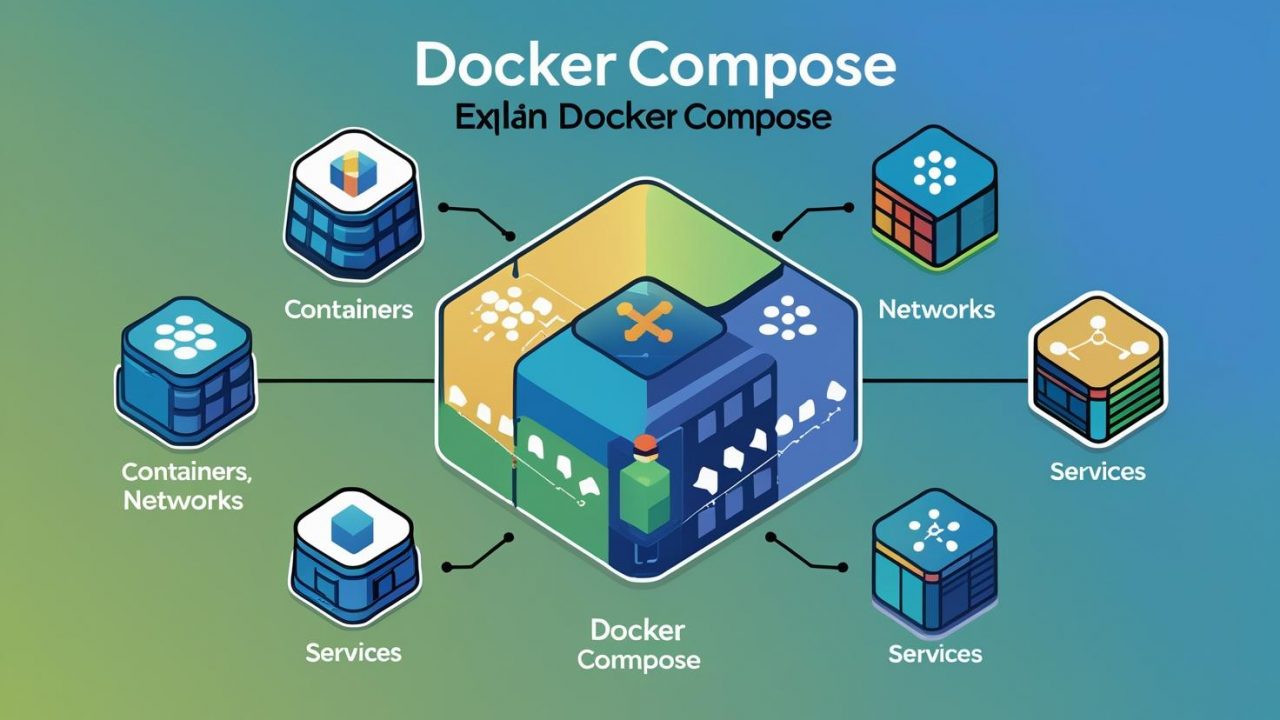What is Docker Compose? | OpsNexa’s Complete Guide
At OpsNexa, we believe that orchestration is the future of software development and IT operations.
Managing single containers is useful — but managing multi-container applications? That’s where real power lies.
This is exactly why Docker Compose exists — it simplifies complex container setups into a few straightforward commands.
If you’ve ever wondered, “What is Docker Compose, and why is it so important?”, this is the ultimate guide you’ve been waiting for.
What is Docker Compose?
Docker Compose is a tool for defining and running multi-container Docker applications.
Instead of running Docker commands manually for each container, you can:
-
Define all your services, networks, and volumes in a simple YAML file (
docker-compose.yml). -
Start, stop, or manage your entire application stack with a single command.
OpsNexa Insight:
Think of Docker Compose as a conductor leading an orchestra of containers — all coordinated, all in harmony, ready to perform.
Why Use Docker Compose?
Without Docker Compose:
-
You would have to launch each container manually.
-
You’d set environment variables, volumes, and network links separately.
-
It would be tedious, error-prone, and unscalable.
With Docker Compose:
-
One YAML file describes your entire app.
-
One command (
docker-compose up) spins up everything. -
Scaling, updating, and maintaining services becomes seamless.
✅ Save time
✅ Reduce complexity
✅ Enable automation
✅ Promote reproducibility
At OpsNexa, we use Docker Compose not just for development, but also for staging and production-ready deployments.
How Docker Compose Works
Docker Compose works in three simple steps:
-
Define Your App
Create adocker-compose.ymlfile that outlines all your services, containers, networks, and volumes. -
Run
docker-compose up
Launch and orchestrate all services at once. Docker automatically handles the dependencies and ordering. -
Manage
Scale services, rebuild images, stop containers — all easily using simple Compose commands.
🛠️ Example docker-compose.yml:
In this setup:
-
An Nginx web server
-
A Node.js application
-
A PostgreSQL database
… all spin up with a single command.
Core Components of Docker Compose
When crafting your docker-compose.yml, you’ll interact with:
| Component | Purpose | Example |
|---|---|---|
| Services | Define containers to run | web, app, db |
| Networks | Define communication rules | frontend, backend |
| Volumes | Persistent data storage | /var/lib/postgresql/data |
| Dependencies | Control container startup order | depends_on |
OpsNexa Tip:
Organizing your services properly with Docker Compose is a best practice — especially when scaling up microservices.
Benefits of Docker Compose
Implementing Docker Compose offers major wins:
✅ Rapid Deployment
Spin up complex environments in seconds.
✅ Environment Parity
Your dev, staging, and production environments stay consistent.
✅ Simplified Configuration
All container settings live in one place.
✅ Easier Troubleshooting
Logs, networking, and service management become centralized.
✅ Scalability
Easily scale services (docker-compose up --scale app=5) for load balancing or testing.
Common Use Cases for Docker Compose
At OpsNexa, we help clients use Docker Compose in many scenarios:
🔹 Microservices Development
Running multiple services (APIs, DBs, caches) during local development.
🔹 Continuous Integration/Continuous Deployment (CI/CD)
Spinning up isolated, reproducible environments during testing pipelines.
🔹 Rapid Prototyping
Building and testing multi-container applications quickly.
🔹 Training Environments
Setting up controlled, easy-to-reset environments for teaching and workshops.
Docker Compose vs Kubernetes
| Feature | Docker Compose | Kubernetes |
|---|---|---|
| Best For | Simple to moderate apps | Complex, large-scale apps |
| Ease of Setup | Very easy | Steeper learning curve |
| Scaling | Manual or basic | Automated, advanced |
| Orchestration | Limited | Powerful & flexible |
| Complexity | Low | High |
While Docker Compose is fantastic for local dev and small to medium deployments,
Kubernetes steps in when you need enterprise-level orchestration — and at OpsNexa, we help you graduate smoothly when you’re ready.
Limitations of Docker Compose
Even though it’s powerful, Docker Compose has a few limitations:
❌ Single-host deployments — No built-in multi-node support.
❌ Limited auto-scaling — Unlike Kubernetes, Compose doesn’t scale based on resource load.
❌ Manual updates — Updating services can sometimes require downtime unless handled carefully.
But for 80% of modern applications, Docker Compose provides all the power you need with far less complexity.
The Future of Docker Compose
With the evolution of Docker Compose V2, even more improvements have arrived:
🚀 Native Docker CLI Integration
Now you can use docker compose (no hyphen) directly without separate installation.
🚀 Improved Compatibility
Compose files now work seamlessly with cloud backends, including AWS and Azure.
🚀 Docker Desktop Enhancements
Tighter integration with local development tools, volume management, and networking configurations.
At OpsNexa, we’re already leveraging these enhancements to deliver faster, better containerized solutions.
Final Thoughts
Docker Compose transforms how teams manage multi-container applications, cutting complexity and empowering innovation.
It’s lightweight, powerful, and ideal for:
-
Startups looking to launch fast
-
Enterprises refining their DevOps pipelines
-
Teams prioritizing agility and reproducibility
At OpsNexa, we specialize in container orchestration — from Compose to Kubernetes and beyond — designing systems that are future-proof, scalable, and tailored to your mission.
Ready to build, deploy, and scale smarter?
Contact OpsNexa today — let’s compose your success story.
You can also Contact OpsNexa for Devops architect and devops hiring solutions.



